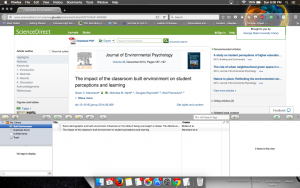
What is Exposure Therapy?
According to the American Psychological Association, Exposure therapy is a psychological treatment that was developed to help people confront their fears. When people are fearful of something, they tend to avoid the feared objects, activities, or situations. Although this avoidance might help reduce feelings of fear in the short term, over the long term it can make the fear become even worse. In such situations, a psychologist might recommend a program of exposure therapy in order to help break the pattern of avoidance and fear. In this form of therapy, psychologists create a safe environment in which to “expose” individuals to the things they fear and avoid. The exposure to the feared objects, activities, or situations in a safe environment helps reduce fear and decrease avoidance.
In short, Exposure therapy is the idea that exposing people to their fears in controlled amounts will help people ultimately overcome their fears and decrease the chances of those people avoiding that fear.
Who can it help?
Exposure therapy is usually used to help people with PTSD. However it can also be used to help those with phobias, anxiety and panic attacks and people with obsessive compulsive disorders.
Types of Treatment
- In vivo exposure: This involves the person directly facing their fears. For example, a person who is afraid of bugs may be directly exposed to them.
- Imaginal exposure: This involves the person mentally pushing themselves to recreate the fear or imagine and discussing it.
- Virtual reality exposure: This method is the same as In vivo exposure, but is used when peoples fears are not easily obtainable or difficult to recreate.
- Interoceptive exposure: This involves the person bringing their fear upon themselves and realizing that it can not harm them.
Rate of Treatment
Treatment can be administered three different ways. The first way is Graded exposure. In graded exposure, the person is slowly exposed to their fears and is gradually increased as the treatment progresses. For some this means starting with “easy fears” and progressing to more difficult ones. The second rate of treatment is Flooding. In flooding, the person starts with multiple fears at once and is usually exposed to their greatest fears. The last rate of treatment is Systematic Desensitization. This type of treatment places people with their fears however, they are relaxed beforehand. The idea is that they will be relaxed and therefore will not feel the fear as strongly and eliminate it altogether.
Sourced from: http://www.div12.org/sites/default/files/WhatIsExposureTherapy.pdf
